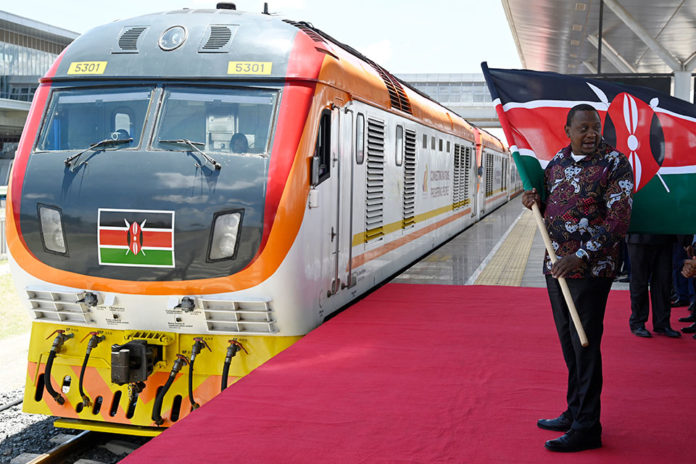SGR Kenya: President Uhuru Kenyatta’s pet project Standard Gauge Railway line (SGR) has revealed that it has so far made over Sh. 21 billion in the three years it has been in operation.
The controversial railway line said that in the three years to May this year, it posted a combined operating loss of Sh. 21.68 billion.
This revelation was made via a report to Parliament that was made by the ministry of Transport which is under cabinet secretary James Macharia. The report said that the line’s operational costs had hit Sh. 46.71 billion against revenues of Sh. 25.03 billion.
Auditor General: We’re unable to trace Sh. 16 billion given to 23 ministries
This comes barely three months after it was revealed that the SGR could shut down if a pending debt of Sh. 38 billion in bills is not paid to Africa Star Railway Operation Company Ltd, the Chinese company contracted to operate the trains.
Africa Star Railway Operation Company is majority-owned by China Road and Bridge Corporation (CRBC) and was contracted in May 2017 to run the passenger and cargo trains on the SGR. Africa Star manages the ticketing system, landing and offloading of cargo and collection of passenger fares, including non-cash revenues like M-Pesa.
The first red flag went off two years after SGR started operations. Financial figures from China Communications Construction Company which operates the railway showed that revenues were not enough to meet the operation costs, which are estimated at Sh. 1.5 billion a month or Sh. 18 billion a year.
In the first full year operation to June last year, SGR made revenues of Sh. 2.4 billion, but this was based on a freight operations of six months. The SGR raked in sales of Sh. 10.1 billion in its second full year of operations.
In the five months to May this year, operating costs stood at Sh. 7.229 billion, while sales hit Sh. 4.8890 billion. These sales were mainly from cargo.
Uhuru’s government borrowed Sh. 4.5bn daily for 3 months to fight corona
The current poor performance has been attributed to reduced limited storage capacity at the Embakasi Inland Container Depot (ICD), minimum use of the Nairobi Freight Terminal that handles cargo not stored in containers and the rail charges. The freight services formed the main economic justification for the $3.2 billion (Sh. 323.20 billion) that President Kenyatta’s administration pumped into the project through loans largely procured from Exim Bank of China from May 2014.
The SGR has been one of the most controversial mega projects to be undertaken by a Kenyan government in the recent past. Critics fear that the project, which stalled after the completion of the Nairobi-Naivasha phase, has no value for money. SGR Kenya.








